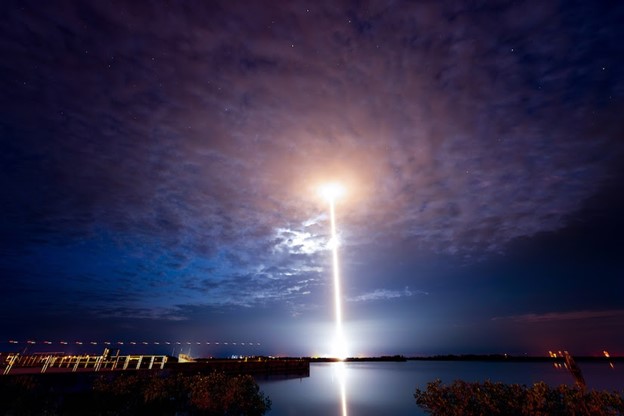America’s space assets, so vital for both defense and civilian infrastructure, are deeply threatened by China and Russia
Space is integral to the way the United States military fights, according to John F. Plumb, the assistant secretary of defense for space policy. He spoke at the Aspen Security Conference in Colorado, carefully discussing the still classified Space Strategic Review. That document looked at the national security environment for space.
The Pentagon considers China as the key challenge. China has already fielded ground-based counterspace weapons and it continues to seek new methods to hold U.S. satellites at risk. China is building a space architecture that enables its military to execute long-range precision strikes.
“China ultimately seeks to challenge our ability to conduct joint operations in the Indo-Pacific,” Plumb said. “They are fielding and developing increasingly complex capabilities to deny space missions to the U.S. joint force. Over just the last few years, the quantity and quality of counterspace threats have increased significantly. China has already fielded ground-based counterspace weapons and it continues to seek new methods to hold U.S. satellites at risk. China is building a space architecture that enables its military to execute long-range precision strikes. …China ultimately seeks to challenge our ability to conduct joint operations in the Indo-Pacific.”
As China (as well as Russia) becomes more capable of attacking U.S. satellites, the military DOD is moving from having a few very large and expensive satellites, in geostationary orbits to a proliferated architecture in low-Earth orbit. According to Plumb, that has several advantages, the first being it makes attacking the target harder, and it means the U.S. can capitalize on the so-called “refresh rate.” The large “exquisite” satellites are very expensive and designed to last 20 years. The low-Earth orbit satellites last three to five years and “provide an ability to innovate at speed and not have to look out for my requirements 20 years from now.”
In previous testimony to the House Armed Services Strategic Forces Subcommittee, Plumb described the importance of space to America’s defense. “It provides us with a missile warning and missile tracking critical to defending our homeland. It provides position navigation and timing to strike targets with precision. And it provides communication in austere environments to support global command and control. To put it simply, space-based missions are essential to the U.S. way of war.”
The U.S. Space Command assumed responsibility for missile defense this year. “In the increasingly complex global threat environment, missile defense is critical to defending the homeland,” said U.S. Air Force Gen. Anthony Cotton, USSTRATCOM commander. “I am confident that this…better supports our integrated deterrence framework in safeguarding our nation.”
President Trump created the Space Force in 2019.
An Atlantic Council study noted that “the proliferation of counterspace capabilities creates ongoing threats to space security that the United States must prioritize addressing in order to ensure the continuance of its space activity. The United States is reliant on space for all manner of things critical to its security, including positioning and navigation; civil and military communications; intelligence, surveillance, and reconnaissance; and tracking, assessing, and communicating military commands. China and Russia understand the asymmetric nature of the United States’ reliance on space for defense and security purposes and thus are increasingly developing counterspace capabilities to place US space and terrestrial assets at risk. China’s and Russia’s development and testing of direct-ascent ASAT capabilities and soft-kill satellite attacks such as dazzling and lasing should be carefully studied.”
During the summer, U.S. Space Force Deputy Chief of Space Operations, Strategy, Plans, Programs, and Requirements, Lt. Gen. Philip A. Garrant made history by leading the first-ever Space Engagement Talks with Japan, aiming to enhance combined space operations and establish a bilateral roadmap for future collaboration.
Photo: DoD
